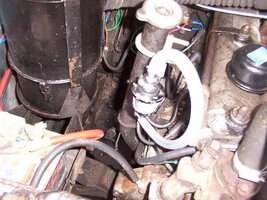littlelegs
Big Landy Fan
View attachment 112813View attachment 112812View attachment 112811View attachment 112810Hello All
Here is some pictures of my breather system, but I don't have any pics of it being installed,but "Littlelegs" gets the idea.
Do I need a source of fresh air in there as well, so that it doesn't cause a vacuum and therefor maybe suck up the oil?
Will check into that, maybe it sorts out the problem.
H
The system needs air coming in at one end and exiting at another, taking with it any gasses and oil mist. Presumably your system is designed to return or contain the oil, however, if there is no air inlet or even a PCV in the system then the vacuum created in the crankcase by the engine acting as a vacuum pump can be considerable and can implode seals and gaskets or draw up oil! I suggest trying only one connection to the rocker cover and fitting an air intake filter to the front breather/filler to give that through put of air, you may still need a PCV to limit the vacuum when the throttle is closed at high revvs.

